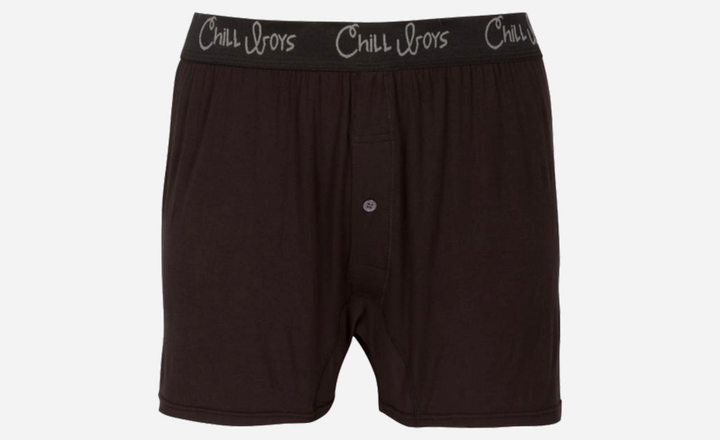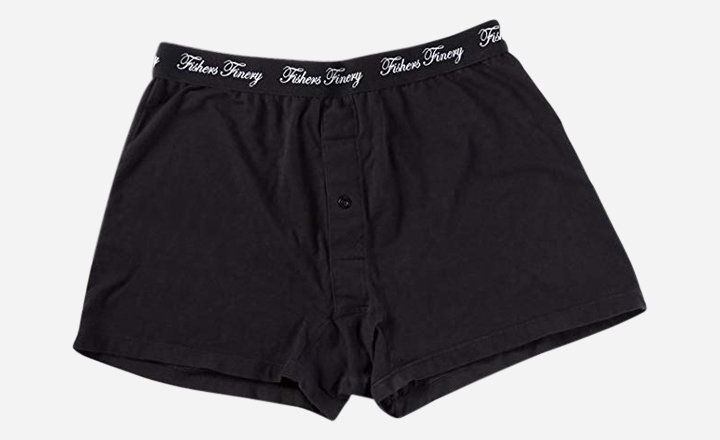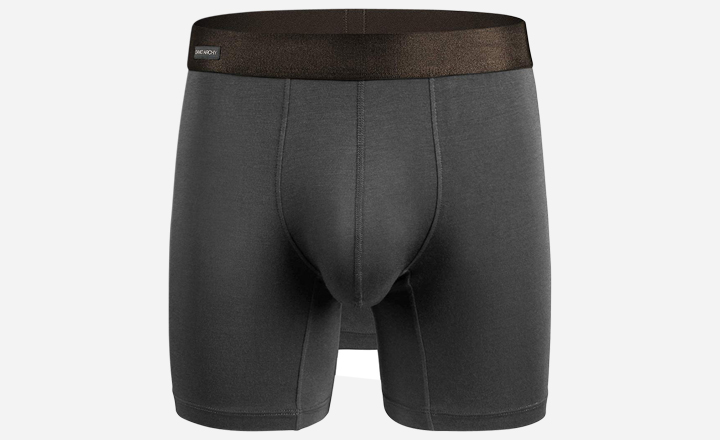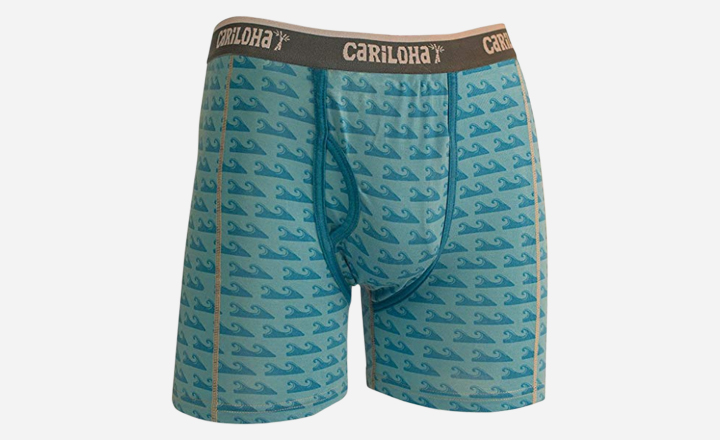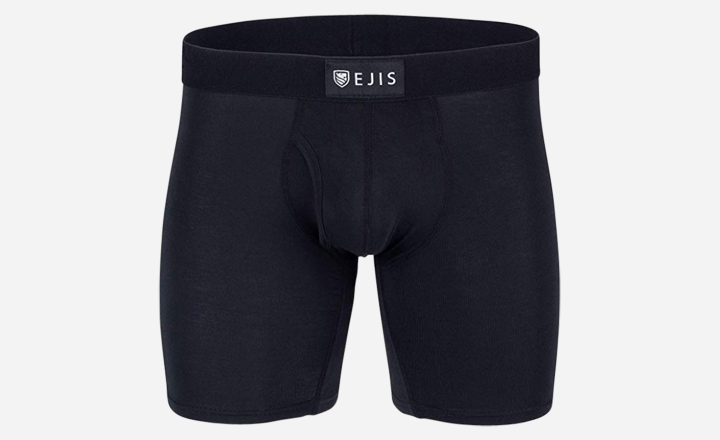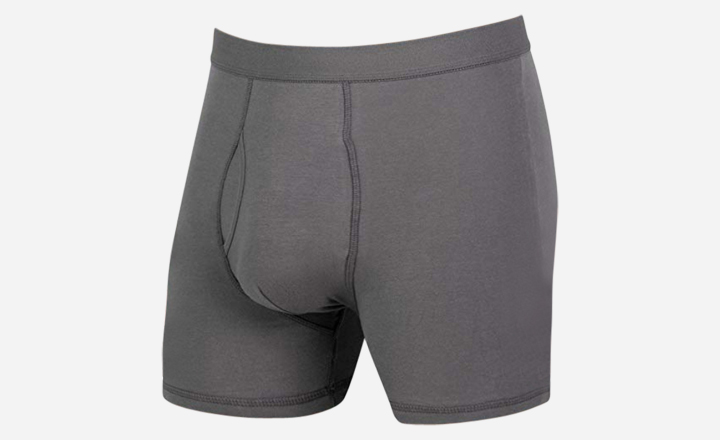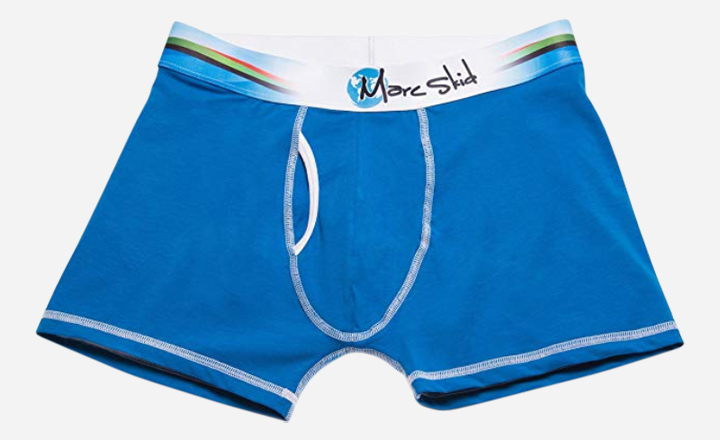Let’s be honest here. The years of purported ignorance when it comes to our underwear are over.
Perhaps, once, we could feasibly claim that we had no idea from where the clothes we choose to sport came. We could pretend we had never heard the terms ‘sweat shops’ or ‘environmental destruction,’ and simply enjoy buying underwear with a consistently ever-cheaper price tag.
But that era is done. With the Internet and freedom of information being as powerful a force as it is, and our increasingly interconnected and globalized world showcasing us so many of the darker truths and horrors we previously were not privy to, now every consumer has to make a choice when buying their clothes.
For some, it’s simply a matter of price versus quality, with elements like convenience and comfort thrown in. For many of us, it’s price versus environmental and ethical ramifications as the headlining match, with heavy attention also paid to quality and longevity.
Was the underwear made in a work environment with atrocious labor conditions? Are the source materials damaging to extract, or was the supply-chain route environmentally unfriendly? In fact, after we’ve worn and used the underwear to our fullest extent, can we rely on it to be biodegradable and therefore not become the problem of our too-full landfills?
These are all the questions any ethical and eco-friendly consumer must ask themselves before choosing where to find their underwear.
Furthermore, they must be rigorous in oversight and review, because nobody who wants underwear made from eco-friendly products like Modal is fine with that very same underwear being made in exploitative, dangerous conditions.
Add in the fact that the men’s ethical underwear market is sizably smaller than its female counterpart, and we can understand the difficulty in finding the right fit.
So if you are wary your current underwear supplier matches your values, and want to ensure only companies that do get your money, this article is for you.
Before we jump into the exact list, here are a few key areas to focus on when shopping for underwear that’s both green and humane.
Top 7 Best Eco-Friendly and Ethical Men’s Underwear
Pro: Soft, comfortable
Con: Issues with quality at times, can last less time if not washed properly
Unique bamboo boxers: The guys and gals over at Chill Boys sure know how to make a soft pair of boxers. Without a doubt, this pair is one of the softest, most comfortable pairs of boxers on the market, which undoubtedly comes in no small part from the 90% bamboo composition (which is not only a delight for your downstairs, but for the environment as well).
Unfortunately, it would appear that currently Chill Boys is limited to just bamboo boxers, leaving out the necessary briefs and boxer-briefs crowds. We imagine this will be temporary, but those two groups of men would do better to find a more suitable pair from another company.
Pro: Good ventilation
Con: Boxer limitations
Sustainability: Fishers Finery’s commitment to sustainable environmental practice, seared even into its website, makes it a fine candidate for eco-friendly underwear. This particular pair, which attributes its trademarked softness to a modal cotton microfiber blend (didn’t we say material was important?), also has incredibly good ventilation.
Arguably the biggest issue with these boxers comes from its leg cut, which is half due to this particular product and half due to the overall boxer dilemma on length. Users also reported some pairs to be lacking room in the crotch and butt areas.
Pro: Ultra soft, form-fitting
Con: Tend to sag a bit after enough washes/time
Best in the boxer-brief world: Another bamboo rayon classic picked from clean, all-natural farms, this particular pick is without a doubt the best option for anyone in the boxer-brief crowd. David Archy’s underwear, quite reasonably priced for a 3-pack when compared to its competition, is great for more form-fitting outfits.
However, while initially they are extremely good at keeping all of your business where it needs to be, after some time they can become saggy or baggy, especially in the upper leg area.
Pro: Bamboo-majority product
Con: Durability
Comfort mixed with stretch: Carihola, also smart enough to be hopping on the bamboo train, can all but guarantee these will be among the most comfortable underwear you ever wear. The 95:5 ratio of bamboo to spandex creates a phenomenal blend of both comfort and stretching capability. Not to mention, it is both an ecologically-friendly and ethically-upstanding product, guaranteeing your comfort in both mind and body.
Unfortunately, Carihola’s durability can be the luck of the draw at times. At twenty dollars a pair, the low lifespan on this boxer-brief can be mildly frustrating– one user reported a month before rips and tears became apparent! In the age of pushes for sustainable, long-lasting underwear, Carihola’s definite problem can be found in its durability.
Pro: Guaranteed sweat proof
Con: Waistband
Soft, stylish: Another victory for the boxer-brief men of the world, this is a truly premium product. It boasts a fly-laden comfort pouch and ridiculously soft micro modal fabric that is both more water-absorbent and ecologically-friendlier than traditional cotton. It also tackles an issue many boxer briefs run into, which is a strong enough leg length.
The only primary problem reported by users derives from the waistband. While the boxer briefs can adapt to the size of the man wearing them, the waistband can struggle to keep up due to its more flexible material, which at times can sag a bit.
However, not only is Ejis a good investment due to its long-lasting underwear (meaning you’ll buy at a slightly higher price, but much less frequently), it’s also much better in the realm of route transparency.
Pro: Affordability
Con: Reliance on cotton
Compromise between cost/ethics: Natural Feelings is on the opposite end of the spectrum. At eight dollars per pair before shipping, it’s without a doubt the cheapest option on this list, and is great for the person who wants to ensure their money isn’t being spent hurting workers or the environment, but also isn’t willing to shell out higher price tags on their underwear.
However, one caveat here is that Natural Feelings, while it claims to be only fighting for natural cotton, is also so heavily reliant on it for its product that it almost surely has some elements of synthetic or artificial chemicals being employed (and the very fact that this cannot be independently verified is a problem, as previously mentioned).
The quality cotton and spandex blend guarantees that color and shape will be retained after numerous washes, unlike many of its competitors, but also means that the ecological footprint on this underwear is higher than for all of the other entries on this list.
Pro: Entire product dedicated to ethical shopping
Con: Lack of style options
Tribute to green: Making a strong case for the most pro-green product in this list, Marc Skid checks all the boxes for eco-friendly and ethical underwear. Not only does it donate four dollars to a charity upon each purchase, but it also uses fine natural cotton and a recycled water bottle (for the waistband) in the fabrication of each of its boxer briefs.
As can be imagined with charity clothing like this one, the major drawback here is an overall lack of options in design and style. While the deep navy blue look is one that many will find agreeable, Marc Skid could do well in diversifying their flagship underwear.
Best Ethical Underwear: Buying Guide
It’s important to remember that no matter what, underwear is still our most private, intimate, and necessary piece of clothing. We start and end our days with just our underwear. Therefore, we’ve tailored this list to also ensure that all underwear is not only good for the producers and environment, but for you, the consumer, as well. After all, comfort and quality are non-negotiable aspects of buying any clothing, especially underwear.
Eco-Friendly Underwear Materials
Naturally, the very first question that arises when searching for ethical men’s underwear is one of the base materials used in the underwear. While there is not a definite leader in terms of the most eco-friendly materials for clothing, some arise as the definite dream team.
Bamboo, for one, is a growing market, as the base crop is one of the cleanest when it comes to harvesting and production. It’s a fast-growing plant that improves soil quality and does not require the use of dangerous insecticides or pesticides. While some issues may arise in the traditional manufacturing process, newer methods of cooking and binding eliminate the use of any chemicals at all when producing organic bamboo fabrics.
Then there’s cotton. We know, we know – it appears to be a paradox. Cotton, a plant with one of the most toxic industrial processes, is a good material for eco-friendly underwear? Well, the answer is – it depends. While the conventional cotton growing process is an ecological and health disaster, organic cotton is quite the inverse. Without using any chemicals or GMOs, this cotton production industry is cleaner for the environment, the growers, and the consumers.
Other strong contenders for great-underwear material include hemp and soy – though admittedly the amount of manufacturers of underwear with these is smaller, so price-point is less likely to be attractive. As for the increasingly popular Modal and MicroModal fabrics, checking to ensure the company is deemed verifiably organic is important, as less-vetted companies wreak havoc on the wildlife of countries such as Indonesia.
No products found.
Production Fairness
Arguably the biggest detriment to organic cotton production, for example, is how labor-intensive it is. This is not a negative by default, but can be when considering how easily work turns to exploitation in many countries where organic cotton is farmed.
That’s why ensuring you only buy from companies that are certifiably ‘fair trade’ is so important. The ‘fair trade’ label lets you know that workers are treated humanely and fairly, and your money is therefore being sent to companies that take care of their employees and comply with labor laws.
This does not just apply to the traditional anti-sweatshop dilemma, but also in ensuring that farmers and other producers are properly prepared and protected from any potential health risks posed by their job. Production evaluation vetting organizations are vital here, and can be found in the product description.
- LARGE WATERPROOF LAYER totally stops pants sweat marks. Protects your butt, back of the legs and crotch.
- COMFORT POUCH WITH FLY gives you easy access while keeping your assets separated and cool. While the...
- SUPER PREMIUM MICRO MODAL FABRIC is 2x softer and 50% more water-absorbent than cotton. With 5% Spandex...
Supply-Chain Route Transparency
Finally, there’s the staggering question of how the underwear gets to you. The key question is, similar to the production process, one of transparency. Just how much do you know about the route your underwear takes before arriving at your house?
If the answer is very little, that’s a problem, as generally it’s done purposefully. Companies trying to cut costs will often cover up their supply-chain routes to hide any ecological or ethical concerns that may arise. Essentially, if you don’t know what happens on the way, you cannot take issue with it, and they cannot be held accountable for it.
But the smart ethical consumer is better than that. Taking a moment to ensure the companies you buy your underwear from have visible routes from their production areas to their product destinations is a surefire way to make sure they’re not hiding any skeletons on the way – either environmental or humanitarian ones.
- $4 per pair donated on your behalf to 4-star charities Saving the World
- Made with the World’s Finest Cotton, Organic Peruvian Pima 95%/Lycra 5%
- One recycled water bottle in each waistband
Undywear.com may receive a small percentage of the purchase price for items bought through our links from Amazon.com and other sites.


